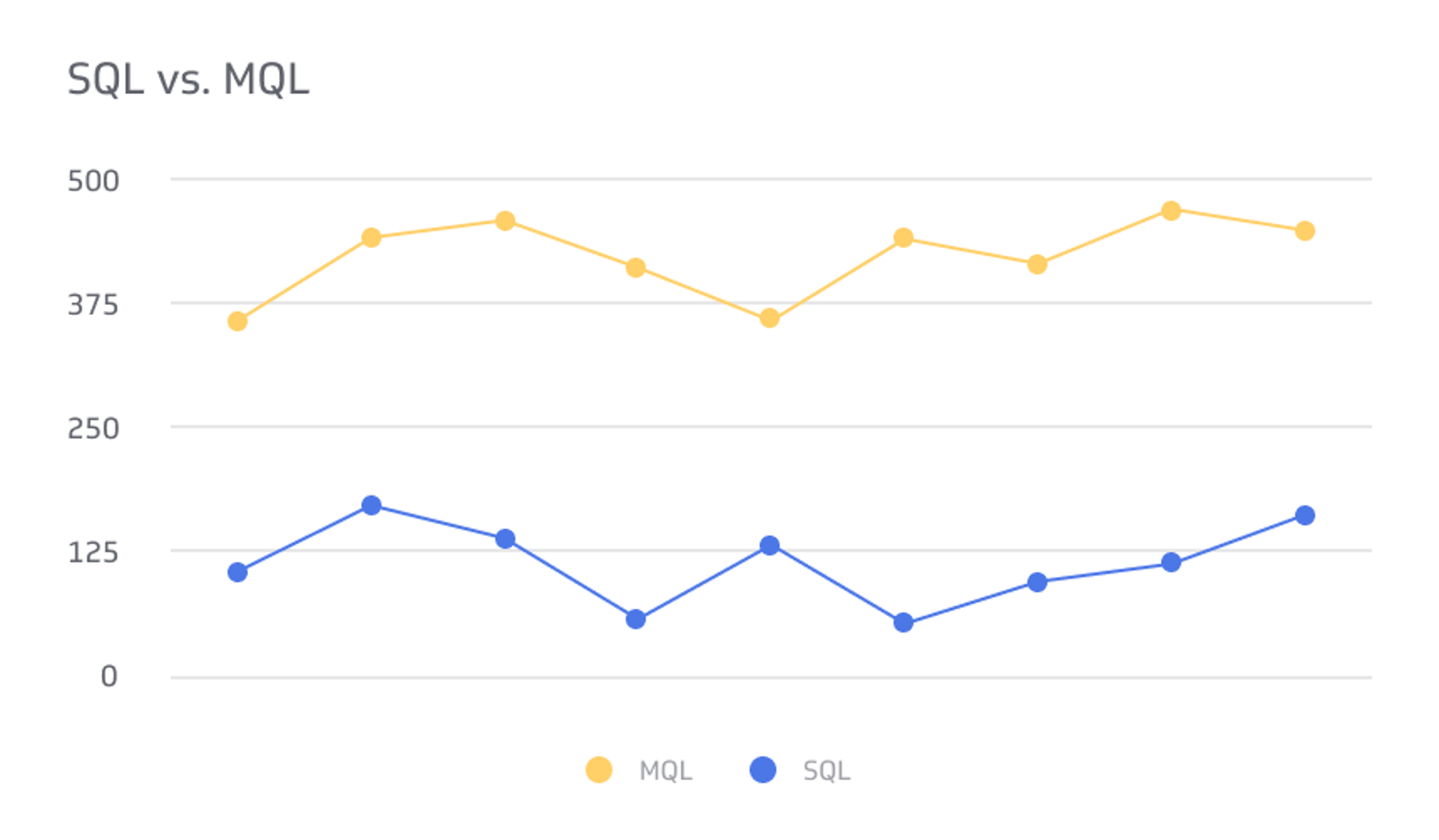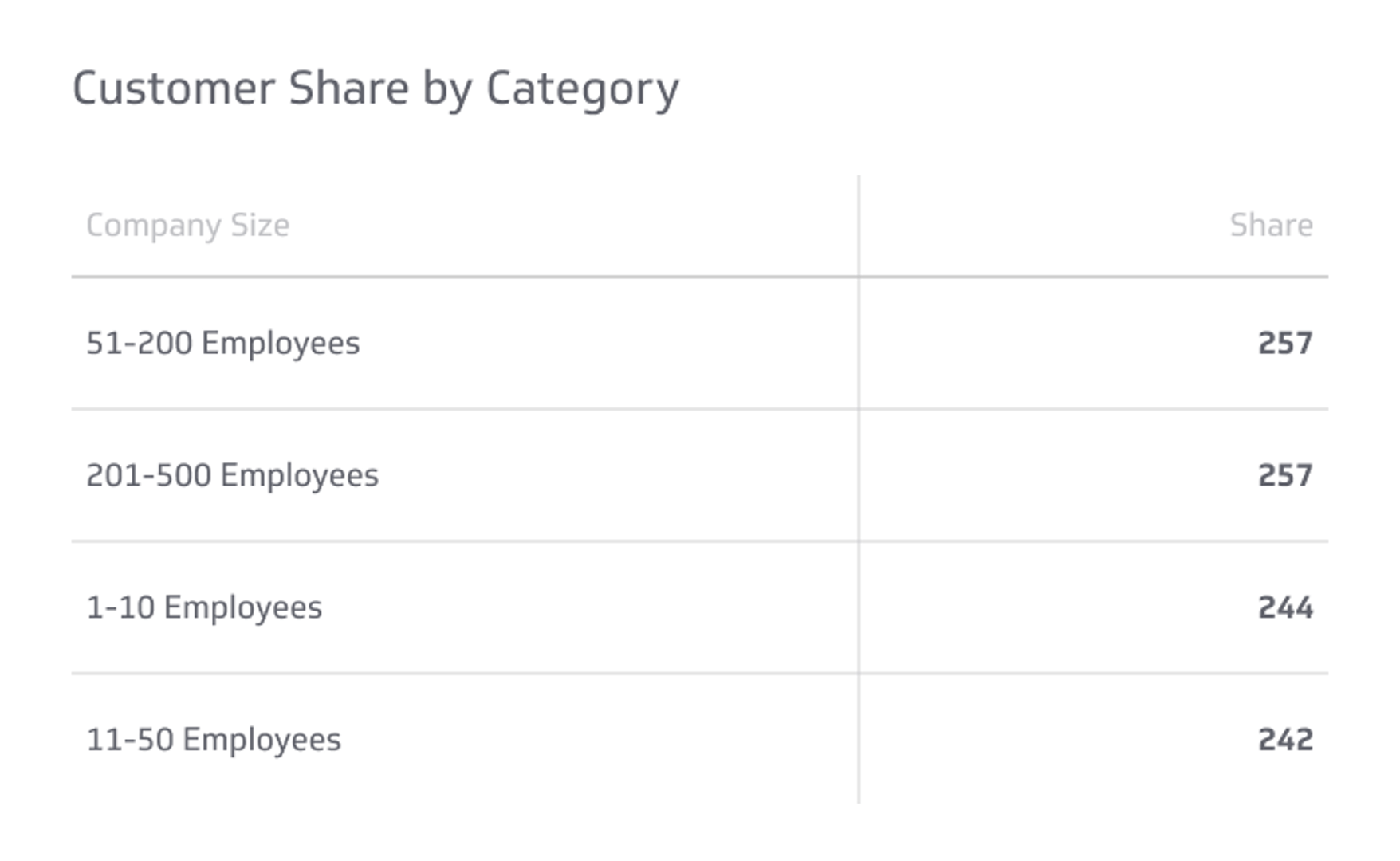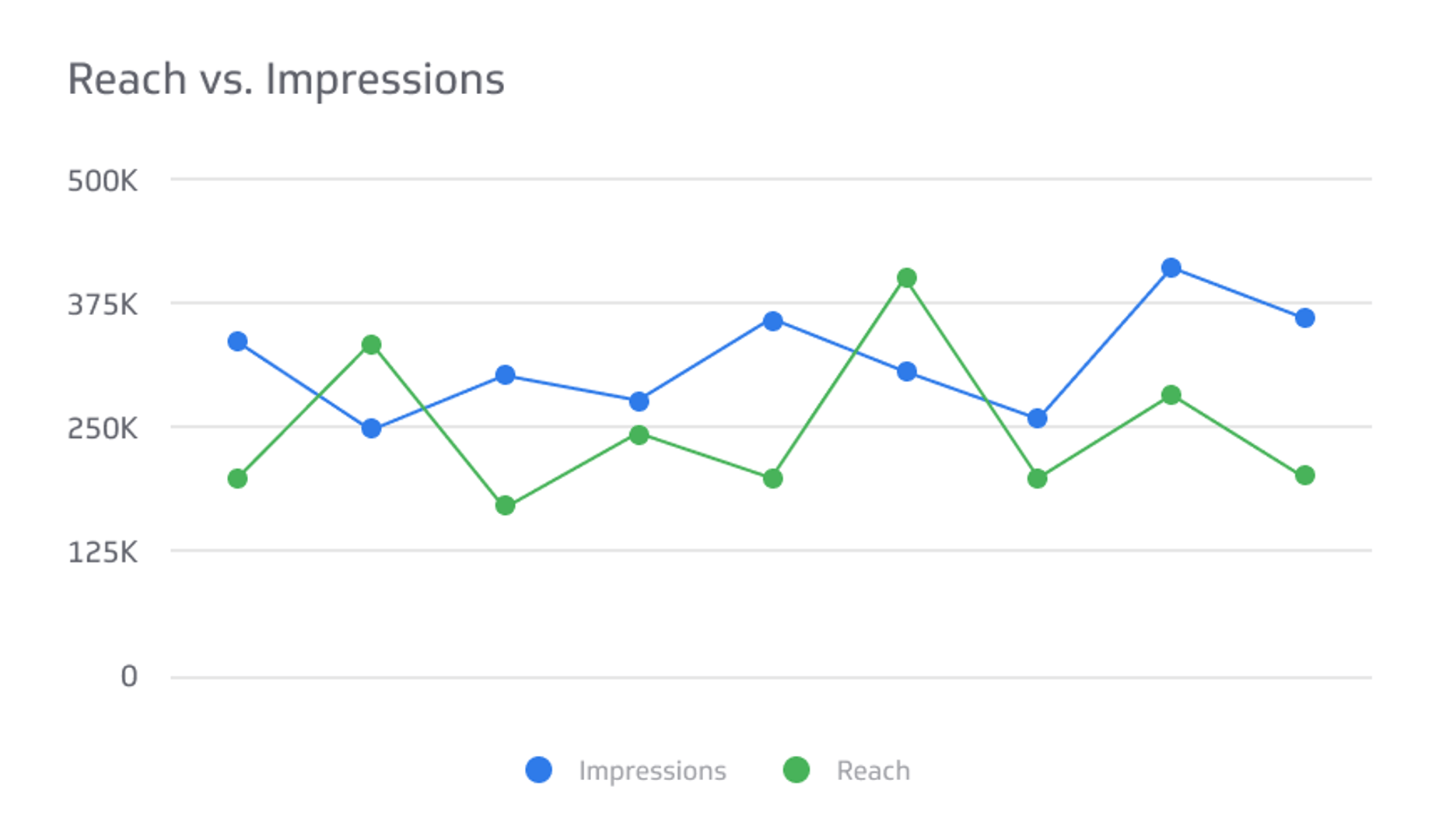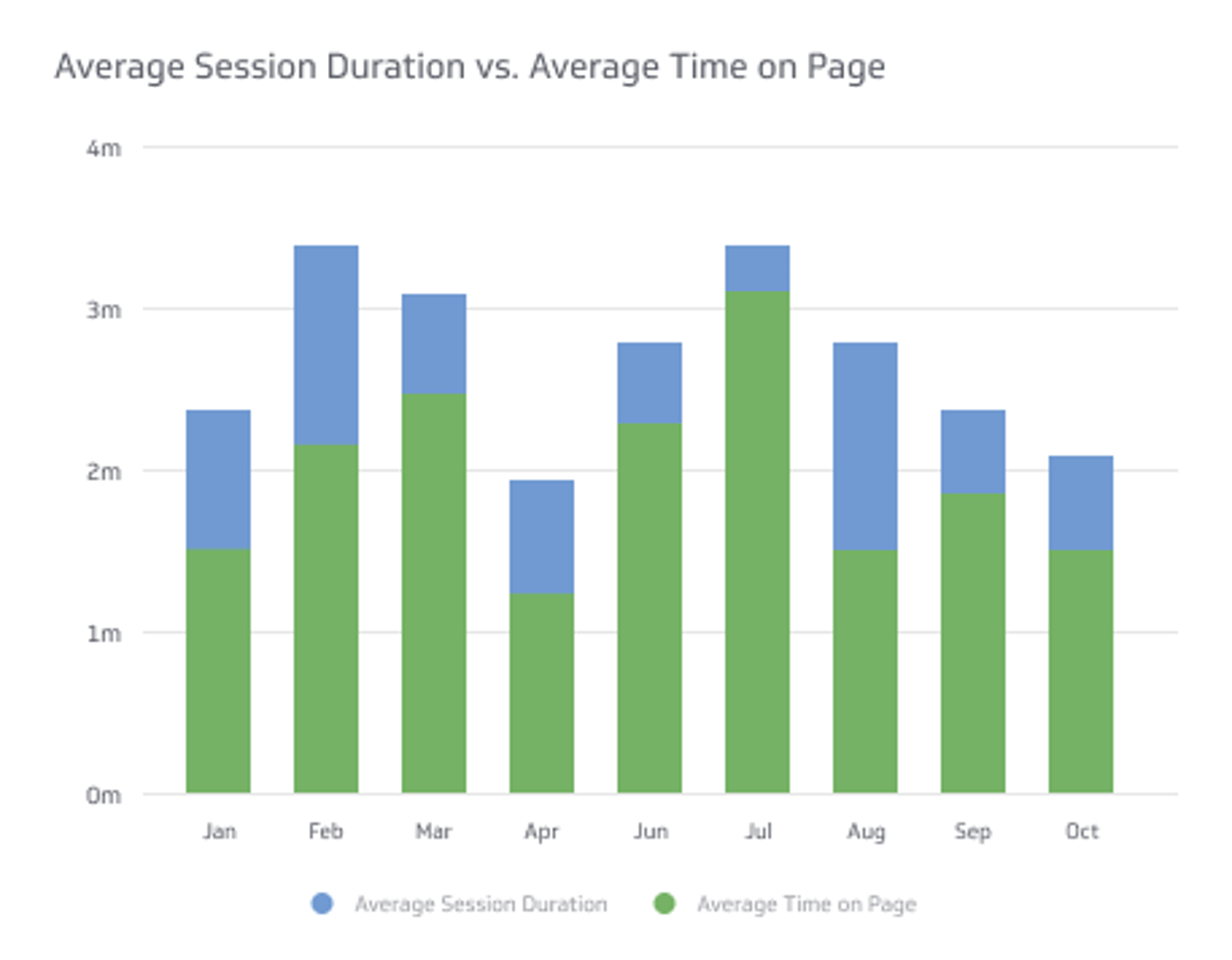SQL vs. MQL
Learn more about these two types of leads, how they differ, and how you can adapt to their unique needs.
Track all your Digital Marketing KPIs in one place
Sign up for free and start making decisions for your business with confidence.

How close is a prospect from making a purchase when you connect with them? Instead of adopting a cookie-cutter approach, a growing number of organizations are segmenting leads into two categories to reflect their current stage in the buyer’s journey.
These categories are MQLs and SQLs. Read on to learn more about these two types of leads, how they differ, and how you can adapt to their unique needs.
MQL vs. SQL: Definitions
MQLs and SQLs are two different types of qualified leads. A qualified lead is a prospect that meets specific criteria that each organization sets. Typically, a qualified lead corresponds to the profile of the average buyer the business caters to.
For instance, a contact who belongs to the decision-making team of a business that is actively comparing SaaS solutions would be a qualified lead.
An MQL, or marketing-qualified lead, is a lead that meets the criteria set by the marketing team. An MQL will usually interact with a marketing campaign, for instance, by downloading a white paper or joining an email list.
An SQL, or sales-qualified lead, is a prospect that the sales team qualified. This contact meets the criteria the sales team is looking for, such as expressing a clear buying intent and forwarding steps toward the purchase.
What Are the Main Differences Between MQLs and SQLs?
The key difference between MQL and SQL is that these prospects are not at the same stage of the buyer’s journey:
- MQLs are somewhere around the top of the sales funnel. These leads are still in the early awareness stage.
- SQLs are further down the funnel. Depending on how your sales team qualifies these leads, these prospects are in the intent or purchase stage of the journey.
This key difference translates into unique behaviors and characteristics in the following areas.
Profile Differences
MQLs typically have more diverse profiles compared to SQLs. A marketing qualified lead can be an individual who makes the final purchase decision, but these prospects can have different roles.
Furthermore, there are some MQLs who don’t have a budget to make a purchase, or who anticipate a purchase that will happen years down the road by doing some research to develop a long-term business plan.
While there is some diversity among SQLs, these contacts share something in common. A majority of SQLs belong to a team that makes purchase decisions.
However, there are cases where an SQL might gather information to present different options to a purchasing team, but SQLs typically have a direct say in what the business will purchase.
SQLs usually have a budget or are actively working on establishing one. They also have a clear business goal that would be supported by the purchase.
Content Consumption
A common way to qualify leads is to look at the content these users consume. A key difference emerges between MQLs and SQLs.
MQLs interact with offers at the top of the funnel. They might sign up for an entry-level webinar, follow your brand on social media, or conduct self-directed research on your blog. The use of third-party websites and peer reviews are also defining trends.
SQLs tend to engage with offers further down the sales funnel. Depending on how your sales team defines SQLs, these users might submit requests for proposals, ask for customized quotes, or even schedule calls with your sales team.
SQLs typically rely less on third-party sources, unless they can find analyst reports. These prospects primarily use information that vendors provide, especially case studies, white papers, product spec sheets, and more.
Level of Sophistication
Another differentiating characteristic between qualified leads is their sophistication level. The level of sophistication refers to how well a prospect understands the further technical aspects of the goods or services offered.
An MQL will typically have a low level of sophistication. They won’t be familiar with technical jargon, or fail to see how specific product features connect with the pain points they are experiencing.
However, in some cases, an MQL might be aware of a pain point without being able to immediately identify a solution.
For instance, a business owner sells products online but knows that slow shipping speeds are an issue. As an MQL, this business owner will research and compare different solutions, such as partnering with a faster courier, working with a warehousing and order fulfillment service closer to major logistics hubs, or offering other perks that make up for slow shipping.
On the other hand, an SQL is already aware that a solution exists. They might be comfortable with technical jargon and understand how the product or service meets the requirements of their organization.
In our example, an SQL has already decided that partnering with a fulfillment service is the best solution. They’ve also learned enough about shipping axes to determine that storing their inventory in a warehouse located on the East Coast would speed up shipping times by an average of two days.
Goals and Intent
MQLs and SQLs typically hope to achieve different goals when interacting with your content or sales teams.
For an MQL, the primary intent is often to gather information. Their goals can include:
- Putting a pain point into words.
- Identifying products or services that address the pain point.
- Learning more about how these products or services would benefit the organization and support its growth.
- Compiling a list of vendors who offer these products or services.
- Gathering enough information to get a better idea of which criteria to consider to start narrowing down these options.
At the SQL stage, the intent of a prospect is mostly about supporting a decision. These goals can include:
- Assessing how well different vendors can meet the requirements of the organization and measuring how the product or service will perform against specific benchmarks.
- Finding a vendor with values that align with the business.
- Conducting due diligence by researching how vendors manage risks, protect sensitive data, or meet industry-specific compliance requirements.
- Determining whether the organization can purchase the product or service without going over budget.
- Projecting the ROI of implementing a new solution.
- Anticipating potential barriers to adoption and identifying strategies in advance.
- Working with the vendor to create an implementation timeframe.
Needs and Expectations
MQLs and SQLs have varying needs and expectations you need to fulfill to help them progress along their buying journey.
At the MQL level, the self-directed journey is on the rise. These leads want to consume content on their own time and terms, but a common barrier is information overload.
A lack of familiarity with the industry means MQLs can struggle to identify the best resources or might not know which questions to ask. You can address this challenge by providing guidance and curating content without intruding on the self-directed journey.
SQLs need content that matches their level of sophistication and provides clear answers regarding how a product or service performs. These leads typically expect a more personalized approach highlighting how specific features can benefit their organization.
However, the emerging model at the SQL stage is a hybrid approach to sales where prospects continue to consume content alone and interact with the sales team through a series of touchpoints. A growing number of vendors are also adopting a self-service model, and this approach is resulting in higher purchases.
MQL vs SQL: Adopting the Right Strategies
Understanding the differences between MQL and SQL puts you in a position to segment your audience and adopt relevant strategies for each group.
Don’t Overlook Your MQLs
The different touchpoints that allow you to connect with SQLs have a higher ROI since these prospects are more likely to make a purchase.
However, overlooking MQLs to focus on SQLs is a mistake. Not all MQLs will convert into an SQL, but engaging and nurturing these top-of-the-funnel leads results in a steady stream of SQLs.
Top Strategies for Engaging Your MQLs
Connect with MQLs by supporting and guiding their self-directed journey through these marketing strategies.
Search Optimization
At the top of the funnel, users will typically issue broad searches to discover solutions to their pain points. You can target these searches by developing educational content through blog posts, articles published on third-party websites, social media, or videos.
Optimize this content with keywords and questions prospects are likely to use early in their buying journey.
Bite-Sized Learning
MQLs typically aren’t ready to invest time and effort into their buying journey since they might not be considering a purchase yet.
Formats like blog posts, videos, or infographics facilitate bite-sized learning. This content doesn’t require a significant investment of time, but it keeps users engaged and helps them progress while positioning your brand as a trustworthy source of information.
Email Series
With 75% of B2B organizations using email software, email series are a popular strategy for engaging prospects.
We talked about information overload being a challenge for MQLs. An email series can guide the content discovery process and gradually improve a prospect's level of sophistication without feeling overwhelmed. It’s also an excellent strategy for re-engaging prospects with a weekly email.
Pillar Pages and Knowledge Repositories
A pillar page is a go-to resource that creates a comprehensive overview of a topic. It also includes links to subpages or blog posts where users can learn more about topic clusters. This format is effective for supporting content discovery.
You can also create a knowledge repository where users can explore content by topic or use a search feature to discover relevant content.
Top Strategies to Nurture Your SQLs
Once your sales team qualifies for a lead, you need to nurture this prospect and help them complete several tasks that lead to the purchase decision.
Content Recommendation
Did you know that 77% of B2B buyers found their last purchase difficult? You can make the buying process easier by delivering personalized content recommendations.
This type of interaction creates value for the prospect. Moreover, it’s also an effective re-engagement technique. You can curate content based on a prospect’s industry, business size, or content consumed in the past.
Case Studies and White Papers
A common intent at the SQL stage is to find concrete data points that show how the product or service will perform.
You can deliver this information with white papers or case studies. These documents can also outline specific benefits that apply to an industry or business structure.
Webinars or In-Person Events
Webinars and in-person events give you the opportunity to deliver actionable information. They often act as the first point of contact with the sales team, and prospects can ask questions. Salespeople can then assess where the prospect is in their journey and recommend the next steps.
Webinars and events require prospects to invest some of their time. These formats help filter which SQLs have a strong interest in what you offer.
Sales Calls or In-Person Meetings
Sales calls, video calls, or in-person meetings are direct interactions with a salesperson. During these touchpoints, your sales team can ask what’s missing for the prospect to make their purchase decision, address possible rebuttals, and discuss pricing in detail.
Wrap Up
Marketing-qualified and sales-qualified leads differ in terms of intent, needs, and level of sophistication.
It’s important to map a sales funnel that addresses the needs of both groups with content adapted to the information they need and other touchpoints that help them progress along the buyer’s journey.



